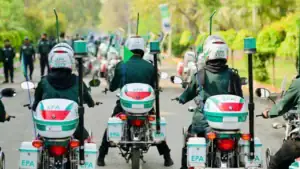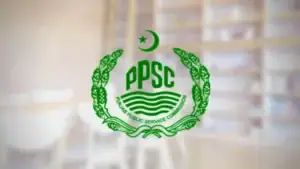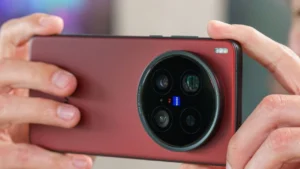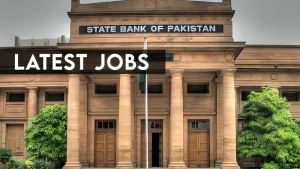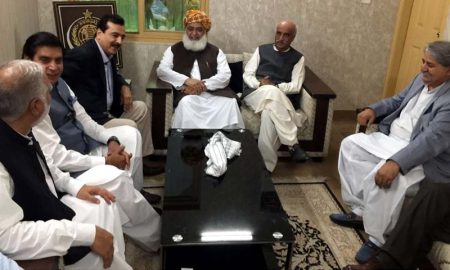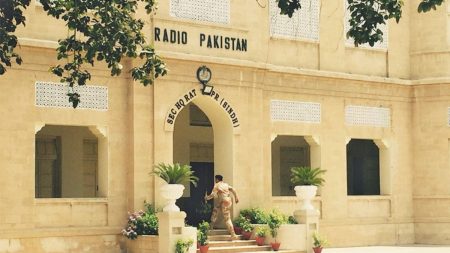As winter nears, the Punjab braces itself for what might be called one of the most challenging periods annually. Face masks, respiratory illnesses, asthma attacks and itchy eyes are signs of the country’s ‘smog season.’
According to a report published by Air Quality Life Index in 2021, the entire population of Pakistan lives in areas where the annual average particulate pollution, PM 2.5, exceeds the World Health Organisation’s guideline. Around 98 percent of the population resides in areas that exceed the country’s own national air quality standards. PM 2.5 is shortening the life expectancy of average residents of Pakistan by almost four years. This figure goes up to seven years in areas like Lahore, Sheikhupura, Kasur and Peshawar cities with life threatening levels of air pollution.
This year, in a change of policy, the government has recognised air pollution as a year-long battle rather than a winter problem, promising continuous interventions instead of seasonal attention. The government is hopeful for better air quality in the coming months as compared to previous years, as interventions are being taken beforehand. However, some experts and environmentalists remain sceptical.
Sarah Hayat, a climate change and policy lawyer, says that poor air quality is a perennial problem in Pakistan not just in the Punjab but also in Khyber Pakhtunkhwa. “The problem becomes much worse in the winter because of temperature inversion,” she states. “This means hot air rises and cold air forms a layer beneath the hot hair.” The cold air then traps air pollutants, which is why suddenly we experience bad air quality at a magnified level.
For years, data regarding air pollution has remained scant in Pakistan due to a lack of source apportionment studies and a handful of air quality monitors in the province. While data seems less of an issue today as even private people have set up air quality monitors giving government and the public access to it, a question mark still remains on whether the authorities have enough of it to form appropriate policies. Rafay Alam, an environmental lawyer and activist, says the government still lacks accurate data on various sources of air pollution. According to him, while the government has less than five air quality monitors for the Punjab, it does have an air pollution control room where they connect to Pakistan Air Quality Initiative and other private monitors so that they have a better sense of the air pollution.
“They are basing their policies on PM 2.5 levels alone,” says Alam. “But under the law, you are supposed to monitor for nine kinds of pollutants including carbon monoxide, sulfur dioxide and ozone etc, to be able to point a finger at the source of air pollution.”Without accurate data on the source, it is impossible to take reliable remedial action, he adds.
Last year, the caretaker government formulated and adopted the Punjab Clean Air Policy. According to Imran Hamid, the Environment and Climate Change Department director general, this year the government is taking strict proactive measures to control air pollution levels before winter arrives.
Hamid says that the government is monitoring all sectors that contribute to smog, with a plan to control causes of air pollution as well as find ways to mitigate its effects. “As per recent studies, the transport sector is the leading cause of smog,” he says, “followed by industries and agriculture.”
This year, the authorities claim to be working with each sector separately, with industry-specific measures. Punjab Safe Cities Authority has been instructed to provide the Environment Department with data regarding the large vehicles that enter Lahore late at night, lack emission control mechanisms and release hazardous dense smoke into the air. That data will then be shared with the Punjab Transport Authority which will deal with those vehicles in their own districts, instructing them to have the necessary maintenance done. Repeat violations will result in the cancellation of their route permits.
They are also working on setting up workshops and garages in the province where annual inspection and maintenance of every car will be mandatory. Recognising low-quality fuel as a crucial issue, Hamid says that fuel testing is part of the federal government’s mandate and cannot be done at the provincial level. “I have passed an order that every month fuel testing will be conducted by the petrol stations themselves under the supervision of an officer from the Environment Department,” Hamid adds. “We are also working towards having our own fuel testing laboratories. However, that still requires cabinet approval.”
In response to Hamid’s pictures on X conducting fuel testing in a mobile testing lab, Dawar Butt, the CEO of PAQI, posted that fuel testing won’t make a difference if it is based 1990s standards. “All fuel passes the tests with flying colours, even that with harmful additives,” he wrote.Hayat says, “while our policies are updated, the data supporting these policies are not always up to date.”In the agriculture sector, the government has set up a helpline at 1317 where volunteers living in crop burning hotspots can inform authorities about the fires. This will lead to strict action taken against stubble-burning farmers.
However, the proposed alternative to stubble burning requires machinery that some farmers say they cannot afford. Hamid says that farmers have been encouraged to make arrangements with those who do have that machinery so that they are able to collaborate without the added cost of purchasing equipment. Besides, the government has placed an order for agricultural machinery worth Rs 5 billion that will be distributed amongst farmers. “This is a time consuming process, but we have spread the word that the farmers who refrain from starting fires will receive priority when the machinery is distributed.”He says that farmers who have had police reports lodged against them since last year and were previously arrested have given written assurances to the authorities to refrain from crop residue burning.
Rana Zafar, the central secretary general of All Pakistan Kissan Ettihad, disagrees on most of these claims, including that farmers are giving undertakings. “In 99 percent cases they prepare these papers themselves and get people to sign those,” he says. “I fail to understand how that is going to improve the environment.”When asked about training in modern techniques that avoid crop residue burning and government support in sharing machinery among farmers, Zafar says, “I wish any of that were true.”
Speaking about the environmental impact of generational farming techniques in the country, Zafar says that according to reports published by the Environment Protection Agency, the agriculture sector contributes about two to three percent of the total air pollution, a lot less than the amount of pollution transport and industrial sectors cause. He says that that percentage is going down now because rice and wheat residue/ wase which was previously burnt by the farmers is getting sold and recycled for new products. Apart from a few who are unable to find buyers for it, farmers no longer need to burn crop residue. He also says “It’s just easier to arrest some helpless farmers than to take action against industries.”
The Environment Department claims to be taking strict action against substandard fuel units and the industries that lack emission control systems. “In Kasur, there are around 45 rice mills, all without emission control systems,” says Hamid. “We have told them that if emission control systems are not installed in their units within the next month, the mills will not be allowed to run.”
Mariam Shah, head of communications at the PAQI, says the government does seem to be taking an aggressive stance towards fighting smog. Shah says that while regulations have been in place for a long time now, no one took substantial steps for their enforcement. “If this government can do that, it’s really the only missing link we require at this time,” she says.The effects of initiatives being taken this year may take some time to have substantial impact. However, the next few months will important. The citizens will be watching closely.

Writer: Nushmiya Sukhera


